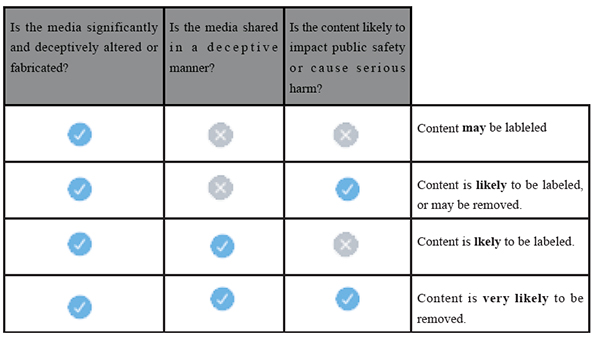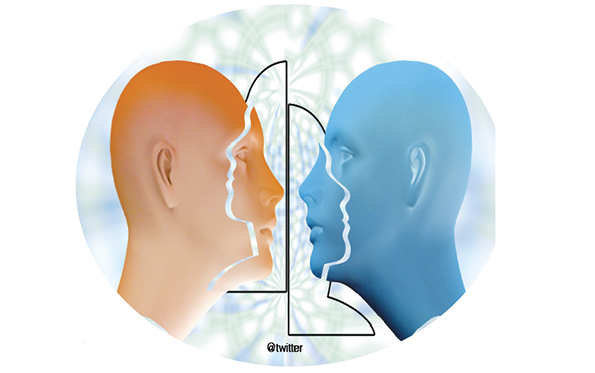As technologies using A.I. are developing, deep fake videos made by deep learning technology are becoming a social issue. CBNU students might have seen one on Youtube. Let’s go check what deepfake is and why it’s an issue right now. -Ed.
Q. What is deepfake?
Deepfake is a compound word of ‘deep learning’ and ‘fake’. From long ago, people could edit pictures and videos using a computer. However, after the appearance of A.I., A.I. technology made it possible to do editing much faster than before. The technology used in artificial intelligence to make fake images, audios, and videos look real are called deepfake. These days, the fake videos made by deepfake are also referred to as deepfake.
Q. How is a deepfake video made?
Students may think that only experts can make a deepfake video. However, this is not true. Even ordinary people without expertise can make one with a little bit of experience. All you need is a video to manipulate, an opensource software like Google’s TensorFlow, and a video of the person you want to synthesize. When the video to be manipulated is uploaded on the software, the software analyzes the person’s various facial expressions frame by frame. After that, upload the video of the person to be synthesized. The software will analyze the person’s face and automatically match it with the previously analyzed faces from the first video. This is how a deepfake video is made. Making a much more sophisticated deepfake video requires expertise. Currently, with a smartphone app, students can easily create a deepfake video for fun.
Q. Where is deepfake used?
Deepfake can be used in various fields such as the film industry, education, games, and the medical world. A dead actor can be featured in a new movie, or a stuntman’s face can be easily replaced with an actor’s face. Dubbing movies in different languages so that people in different countries can see them is also possible. A UK company, Synthesia, dubbed David Beckham’s 2019 Global Malaria Awareness campaign in nine languages by using deepfake. It can also overcome one of the inconveniences of internet shopping, buying clothes without trying it on. Deepfake makes it possible for consumers to try clothes on virtually. As you can see, deepfake can be used to improve our lives.
However, deepfake is also abused by many people. In September 2019, an A.I. company called Deeptrace analyzed 15,000 online deepfake videos. It was shown that 96% was porn, and 99% of them were videos that superimposed the faces of female celebrities onto the original actresses. Besides pornography, deepfake has become a social problem as contents using politicians began to be used as fake news. A representative example is a video clip of former U.S. President Obama calling U.S. President Trump a ‘complete dip shit’. Of course, the video is fake. Furthermore, financial attacks can occur. In March 2019, a UK energy company employee was tricked by a voice message from the head of his company and sent 200,000 euros to a Hungarian company. The voice message was manipulated by deepfake. Keon Myung Lee, a professor in the Dept. of Computer Science said “These days, making fake faces, fonts, and voices are possible. This means that information about someone going somewhere at a particular time can be manipulated. This fake information can make someone be in an unfair situation. Therefore, the development of such technology can be helpful, but it can also threaten our lives.”
Q. What are the possible countermeasures?
Several companies are offering defenses to deepfake abuse. On January 6th, Facebook announced that they will delete contents related to deepfake as the 2020 presidential election is coming up. However, parodies, satirical clips, edited videos deleting part of a speech or changing the word order are excluded from deletion. Also, on February 4th, Twitter announced a new policy, to prohibit sharing synthetic and manipulated media created to negatively impact others. Starting from March 5th, Twitter will delete or label tweets containing manipulated or synthetic content. ‘Is the media synthetic or manipulated?’, ‘Is the content likely to impact public safety or cause public harm?’, ‘Is the media shared deceptively?’ will be the criteria of what tweets will be removed or labeled. If the answer is ‘yes’ to all three questions, the content is very likely to be removed. A content that meets two of the criteria is likely to be labeled or may be removed, and a content that meets one criterion may be labeled. Youtube announced that they will delete manipulated videos related to the election on February 3rd.
Q. Is there a way to determine whether a video or audio is made by deepfake?
A.I. technology can be used to detect deepfake. To help detect deepfakes and manipulated media, AWS, Facebook, Microsoft, the Partnership on AI’s Media Integrity Steering Committee, and academics created the Deepfake Detection Challenge (DFDC). In Korea, there is an A.I. R&D Challenge Contest hosted by the Ministry of Science and ICT. The A.I. R&D Challenge was first introduced in 2017 and held twice under the theme of finding fake news and discriminating manipulated images. Furthermore, technique firms are working on detection systems that aim to flag fakes whenever they appear.
The current deepfake images are not perfect, which is why they can be discerned by the human eye. However, as technology develops more and more, a day will come when we can’t determine whether a video or audio is real or fake. Professor Keon Myung Lee said, “Many technologies are using artificial intelligence. In the past, the research of these technologies was just not enough to shock our society. However, when technology matures and reaches a critical point, it will be used in a form that will shock the society, economy, and culture. Recently, artificial intelligence technology has surprised people, but it has been around for a long time. Even though the technology is old, it didn’t surprise people in the past because it had failed to produce very shocking results which awed the world. We should note, however, that technology has currently grown to a point where it is now truly shocking people, and influencing their lives. I want to impress upon CBNU students that their various fields of study and different majors may not be immune to the effects of deepfake applications. Being sensitive to the development of technology is therefore also vital. In other words, when a new technology appears, don’t just think the technology is ‘funny’ or ‘it can be abused’ but think of how it might change our lives. Let’s develop a sensibility to technology and pay attention to how it will affect individuals.”
By Youn Su-o l sy40@cbnu.ac.kr
By Kwon Ji-ye l whodrk@cbnu.ac.kr


 All
All Culture
Culture






 Youn Su-o& Kwon Ji-ye
Youn Su-o& Kwon Ji-ye











